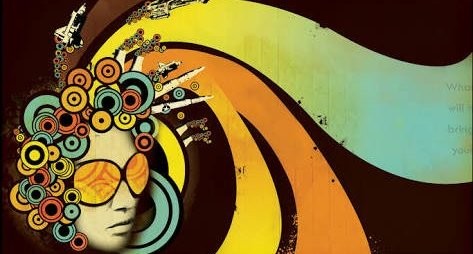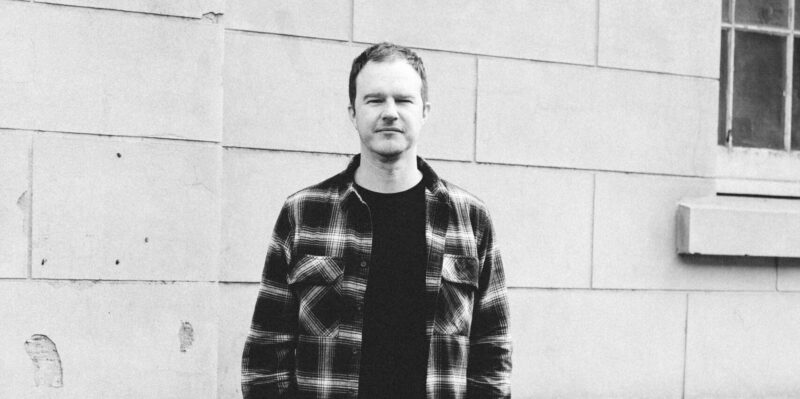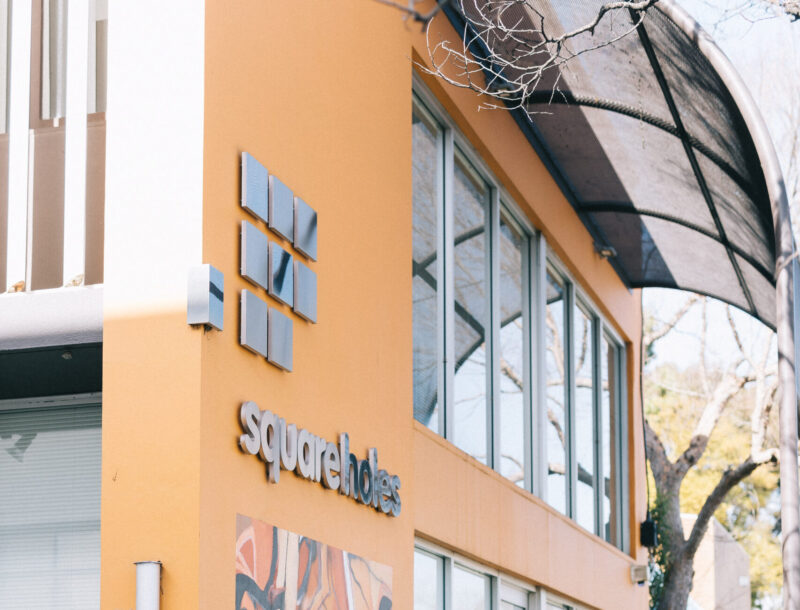The Arts, and our future innovators
Innovation, creativity and imagination is part of the DNA of most Arts companies, particularly those who have weathered the storm of economic and government uncertainty over many, many years.
(** Please put on your Virtual Reality goggles **)
You are sitting in the audience of a large industry conference, and the master of ceremonies asks “can all the innovators in the room please stand.”
You look around the room and hear a rolling chorus of “I’m an innovator,” as the room rises like a Mexican wave at a salsa festival.
(** Please remove your Virtual Reality goggles **)
Thank you.
Now, back to reality.
There is increasing pressure for people to be innovators (whatever that means), but the reality is that very, very few have the necessary skills and minds. Even the few that do, the vast majority of their leaders are risk adverse, blind to big ideas and opportunities (that aren’t their own), funding poor or otherwise suck any desire from team members to think differently and unlock their inner innovator. Even with all the ‘it’s ok to fail’ rhetoric, hot-desking, design thinking training and collaboration workshops, for the vast majority, innovators they are not.
What exciting times we live in. The certainty that the future will be uncertain has never been more certain. And, with this, there is somewhat of a burning deck to innovate or be flamed, plus a blank canvas like never before to re-imagine the future. Extremely exciting, yet also totally freaky scary.
Yes, business and government is changing. New Apps, globalisation and adjusting to the new world, but by and large this is generally slow iteration, with one leader and many even slower followers. And, it seems the bigger you are — big banks, media, retail, government etc — the slower you move, even when all the signs are screaming — WARNING, WARNING, WARNING!!!
What great opportunity for the innovators of the future. Those with true creativity and imagination. But, who are the future super innovators, the ones who will save us!?
Is it the guys or gals wearing t-shirts and sporting hipster beards, tattoos and piercings? Will it be those with hip job titles such as innovator, strategist, design thinker or chief disruptor?
Maybe, likely not.
Innovation comes from getting started, agility and deliberate practice (and practice, and practice, and practice), gaining ongoing feedback, learning, iterating and getting better, and practicing some more (and some more), and eventually moving beyond the ordinary.
Deliberate practice assumes that expert-level performance is primarily the result of expert-level practice. ( read previous article?)
And, innovation also requires a beginner’s mind (aka ‘child mind’) and to look beyond our entrenched biases as to how the world works.
“In the beginner’s mind there are many possibilities, in the expert’s mind there are few.” ( read previous article)
Typically the desire for corporate and government to innovate is met with procrastination, inaction, closed minds and replicating the current norm, rather than reinventing.
A wise lady once said …
“I believe the children are our future. Teach them well and let them lead the way. Show them all the beauty they possess inside. Give them a sense of pride to make it easier. Let the children’s laughter remind us how we used to be.” (Thanks Whitney)
But, what do we teach the children to “let them lead the way?”
There is a big focus on STEM — science, technology, engineering and mathematics. Many of the innovations will surely come from this. But, is this enough to empower creativity and imagination into the future?
Our schools and universities have an increasing focus on vocational education. The risk in this is that many of the vocations being educated for may not exist in the very near future. Universities are producing a torrent of highly intelligent graduates. However, there is the potential of over-saturating the job market with more ‘vanilla’ graduates than ‘rainbow.’ A flood of hopeful graduates with strong literal thinking skills, but very few with strong lateral creative thinking and innovation potential.
Pablo Picasso was once heard say …
“Every child is an artist. The problem is how to remain an artist once he (/she) grows up.”
Children don’t proclaim themselves as creative, having imagination or innovative. It is not forced, constrained or process driven, they just are. And, then when they become adults, or even older children, they lose this effortless creativity, but try without success, even when forced ever so hard, perhaps too hard, to be creative, innovative, disruptive etc.
“All true artists, whether they know it or not, create from a place of no-mind, from inner stillness.” Eckhart Tolle
How do we ignite the artist, the creative, the imagination and innovator in all children and encourage them to retain this, well into their adulthood? How do we give permission for children to continue to play, imagine and think with a mind of inner stillness? These are the future innovators.
In 2007 I joined the Board of Patch Theatre Company, a most wonderful, globally travelling, award winning, theatre company of the highest standards aimed at 4–8 years olds, and working with general public and school audiences. It has been so illuminating and inspiring.
“Patch Theatre Company is based in Adelaide, South Australia and has presented over 100 new productions to more than 1.8 million children and their families since it began in 1972.”
As it says on their website (www.patchtheatre.org.au) …
“Patch Theatre Company is defined by innovation, collaboration and wonder.”
Isn’t that what the future is all about?
My career has given me the fortuitous opportunity to work with a large number of government and corporate leaders and followers and to observe the rising hunger for innovation, creativity and imagination for the future. There is no question in my mind that the Arts sector has the most ably delivered on thinking with creativity, imagination and innovation. And, there are lessons here for our corporate and government leaders.
Such thinking is nothing new for the Arts.
A beginner’s mind has always been essential to the success of an Arts company. And, deliberate practice even more so critical, to build and commercialise fresh, inspiring and seemingly effortless output of the highest standard, again and again, year after year.
With a plethora of creative and imaginative Arts companies across South Australia, the future economic, innovative and cultural benefits are HUGE —e.g. Brink, Windmill, Slingsby, ASO, Australia Dance Theatre, Opera SA, Adelaide Youth Orchestras etc, etc, etc. Plus, Australia’s best Arts festivals – Adelaide Festival, of Arts, SALA, Womad, to Adelaide Fringe Festival. What an amazing artistic ecosystem has been created.
However, even with the amazing intellect, resilience, agility, creativity and imagination of the Arts, requires the support of private and corporate giving through donations and sponsorship. Running on the smell of an oily rag isn’t enough, and there is an increasing need for alternative funding, beyond relying solely on ticket sales and the ever uncertainty of State and Federal Government funding.
From research conducted by Square Holes, the vast majority of the community (80%+) view the Arts and associated festivals as economically and culturally important. Add to this the critical role Arts companies have in nurturing the next generation of innovators, what a great opportunity for private and corporate support.
So, how do we nurture the innovators of the future?
- Put your money where your innovation mouth is, and sponsor or donate to youth Arts. If you are interested in potential opportunities to support Patch Theatre Company, please send me a message and I’ll set you in the right direction. From my and Square Holes’ support of the Arts, there is a huge amount of tangible and intangible benefit to be gained.
- Take your children to professional Arts aimed at young people, such as Patch Theatre, Slingsby, Windmill, Adelaide Youth Orchestras etc. And, allow them to experience the wonder, new experiences and permission for play and imagination. Plus, encourage schools to value and engage with youth Arts.
- Help nurture the Arts ecosystem in your local area. Make your new year’s resolution for 2019 to attend more Arts performances—theatre, dance, music, whatever. Pick something different and new. If you are lucky enough to live in South Australia, go crazy at a Festivals such as the Adelaide Festival of Arts, Fringe Festival, SALA, Womad, the Adelaide Film Festival (or plan a holiday to SA). Subscribe to an Arts company such as the State Theatre Company of South Australia. Or, give the gift to those you love of Arts experiences—tickets, subscriptions etc. There is a great deal of research illustrating the positive cognitive benefits to children and adults of the Arts—new perspectives, new emotions, confronting, cultural examinations, igniting curiosity, permission to think differently, social interaction etc.
- Unlock the inner artist. Encourage the artist in children and yourself. Be this learning a musical instrument, dance, visual art or other. There is again much research supporting the cognitive benefits to children and adults from learning music instruments, visual and other artistic pursuits, plus the benefits in polishing skills in deliberate practice and maintaining a beginner’s mind.
- Encourage Arts + corporate partnerships. There is much corporate and government can learn from the Arts and vice versa. The creativity and innovation of the Arts, combined with the funds and commercialisation skills of business offer massive opportunity moving forward to nurture our future innovators.
Thank you.
Originally posted on LinkedIn just shy of 12 months ago, here.




